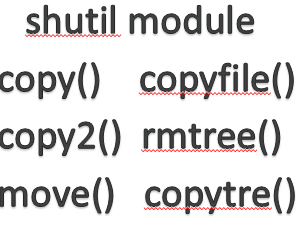Joining the arrays
Concatenate
Concatenation refers to joining. This function is used to join two or more arrays of the same shape along a specified axis i.e row(axis=0) or column(axis=1) wise. Let us seen the syntax and some example of numpy concatenate operation
Syntax
concatenate((a1, a2, ...), axis=0, out=None)
a1, a2, ... : a sequence of array_like
The arrays must have the same shape, except in the dimension corresponding to the axis (the first, by default).
axis: int, optional
The axis along which the arrays will be joined. The default is 0.
out: ndarray, optional
If provided, the destination to place the result. The shape must be correct, matching that of what concatenate would have returned if no out argument were specified.
>>> a=np.array([[1,2,3,4],[5,6,7,8]]) >>> b=np.array([[0,2,5,8],[1,4,7,9]]) >>> np.concatenate((a,b)) # np.concatenate((a,b),axis=0) array([[1, 2, 3, 4], [5, 6, 7, 8], [0, 2, 5, 8], [1, 4, 7, 9]]) >>> np.concatenate((a,b),axis=1) array([[1, 2, 3, 4, 0, 2, 5, 8], [5, 6, 7, 8, 1, 4, 7, 9]])
Stack
Join a sequence of arrays along a new axis.
The axis parameter specifies the index of the new axis in the dimensions of the result. For example, if axis=0 it will be the first dimension and if axis=-1 it will be the last dimension.
stack(arrays, axis=0, out=None) arrays-Sequence of arrays of the same shape axis-Axis in the resultant array along which the input arrays are stacked
>>> import numpy as np
>>> a = np.array([[1,2],[3,4]]) >>> b = np.array([[5,6],[7,8]]) >>> np.stack((a,b),axis=0)#shape-(2,2,2) array([[[1, 2], [3, 4]], [[5, 6], [7, 8]]]) >>> np.stack((a,b),axis=-1) array([[[1, 5], [2, 6]], [[3, 7], [4, 8]]])
hstack
Stack arrays in sequence horizontally (column wise).
This is equivalent to concatenation along the second axis, except for 1-D arrays where it concatenates along the first axis. Rebuilds arrays divided by hsplit.
>>> import numpy as np >>> a=np.array([1,2,3]) >>> a.shape #(3,) >>> b=np.array([5,6]) >>> b.shape #(2,) >>> c=np.hstack((a,b)) >>> c.shape #(5,) >>> c array([1, 2, 3, 5, 6]) >>> x=np.array([[1,2],[3,4],[5,6]]) #(3,2) >>> y=np.array([[7,8],[9,10]]) #(2, 2) >>> z=np.hstack((x,y)) #ValueError: all the input array dimensions except for the concatenation axis must match exactly >>> y=np.array([[7,8],[9,10],[11,12]]) #(3,2) >>> z=np.hstack((x,y)) >>> z array([[ 1, 2, 7, 8], [ 3, 4, 9, 10], [ 5, 6, 11, 12]])
vstack
Stack arrays in sequence vertically (row wise).
This is equivalent to concatenation along the first axis after 1-D arrays of shape (N,) have been reshaped to (1,N). Rebuilds arrays divided by vsplit.
>>> import numpy as np >>> a=np.array([1,2,3]) >>> a.shape#(3,) >>> b=np.array([5,6]) >>> b.shape#(2,) >>> c=np.vstack((a,b))#ValueError: all the input array dimensions except for the concatenation axis must match exactly >>> b=np.array([5,6,7]) >>> b.shape#(3,) >>> c=np.vstack((a,b)) array([[1, 2, 3], [5, 6, 7]])

